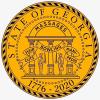Calm Prince Avenue?
Pub Notes
She saw me, but she was driving fast, and she was puzzled by the fact that I was walking out in front of her automobile. When I raised my arms to shrug, she slammed on the brakes, alarming the rest of the women riding with her. They all looked at me as if I were crazy, standing out there in the middle of Prince Avenue in the middle of the day. I pointed to the crossing sign, still blinking, in front of Piedmont College, they all looked over at it, and then they drove off. I’m not sure they understood even then. I was exchanging shrugs with the other driver stopped in the adjacent lane and did not look to see if the women were from out of town. Surely they were. Surely no new car full of attractive local women contains that many people who don’t know the meaning of the flashing pedestrian-crossing signs on Prince Avenue.
We’ve all been walking across Prince to The Grit for years, and we know better than to assume any driver is going to stop. People fly through the blinking signs every day, and they’re going fast. Now that Flagpole has moved to the neighborhood, we’re even more conscious of the fast traffic, and we have even more reason to cross the street—to walk downtown or to eat at the Grit or Viva! or Siri Thai or get coffee at Hendershot’s or walk up to Daily Groceries for a sandwich and a quick browse at Avid Bookshop or over to Village Drug Shop for a prescription. We’re not going to drive across the street to the Bottleworks. Walking is just a natural part of living in the Prince Avenue neighborhood. Walkable amenities are a part of the plan, a part of the reason that Cobbham, Boulevard, Buena Vista Heights, Normaltown, Pulaski Heights, Hancock Corridor and the other intown neighborhoods are there. Safe walking is one of the reasons Chase Street Elementary is a popular neighborhood school. Safe walking is one of the reasons new restaurants and bars and other businesses are opening in Normaltown and in the Bottleworks—opening to serve, along with the wider community, the surrounding neighborhoods.
Prince Avenue cuts right down through the middle of those surrounding neighborhoods, right through the middle of the Normaltown business district, and it is the main artery into town from the north, from the Jackson County suburbs. An artery can get constricted, and Prince starts out wide and free-flowing, then narrows as it moves into town, so that the traffic crossing the bypass at 70 mph is still moving fast when it hits Normaltown and doesn’t slow up much all the way into downtown. Stand in front of The Grit and see the cars and trucks whizzing by, inches from your elbow.
But then hop into your car or mine, and you’ll start speeding along, too. I certainly do. When I’m driving, I’m in a hurry. I know all the lights and try to make them. Forty mph is best, in spite of the lower speed limit, but 40 is slow on Prince. Meanwhile, try to notice, too, all the pedestrians waiting to cross your speedway. What about them? Is a family crazy for walking down to The Grit? Should all children be driven to school? The thing is, we’re between a rock and a hard place. We need the speed, and we need the pedestrian accessibility. Would a “street diet” help, reducing Prince Avenue to three lanes? Whom would it help—you as driver or you as pedestrian? Would it make any difference if Prince were three-laned from Milledge Avenue to town (the part where it is controlled by ACC) but not from Milledge north through Normaltown (where it is controlled by the state)? There’s some indication now that if the mayor postpones a trial run for temporarily three-laning Prince along the ACC part, that will allow time to get DOT on board for a test of traffic-calming along the whole Prince corridor. It is essential for the health of our neighborhoods and our neighbors that we confront this problem of traffic on Prince. The first step is to test the two-lanes-flowing-one-for-turns configuration and see how it works out for Prince Avenue. We need to take that step—sooner or later.
More by Pete McCommons
-
Voting Absentee: Necessary But Not Easy
Pub Notes
-

Be Ready When National TV Comes Calling
Pub Notes
-










comments